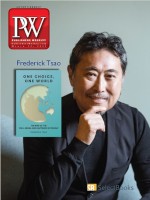In Everyday Utopia (Simon & Schuster, May), Ghodsee surveys the history of utopian experiments and calls for a renewed commitment to envisioning a better world.
Why is utopian thinking so crucial in this moment?
I think the experience of the pandemic lockdowns and the sudden upheaval of our everyday lives also created an opportunity to realize how much of the routines of our daily lives were merely matters of social convention, rather than the way that things have to be. Companies that used to totally refuse the idea of remote work suddenly allowed all their employees to work from home. People raising their children in the nuclear family, in single-family homes, suddenly formed pandemic pods with family, friends, neighbors—anybody they could get to share childcare and homeschooling responsibilities. So right now, we’re in this incredibly plastic moment in time, and we need to seize the opportunity to do more social dreaming before our societies revert to their own sclerotic ways.
What is “family expansionism,” and how can it help support parents, caregivers, children, and others?
I use that term to mean that we have to expand our definition of family to include a wider network of kin and non-kin relations. Given that this thing called the family is the ultimate backup plan when capitalism chokes, or when there’s a pandemic, or when there’s some natural disaster, we immediately shove care and responsibility for the raising of children and all sorts of labor into the home. If we can expand the definition of what that home contains, I think we’ll all be much happier and healthier and more resilient in the face of a lot of future challenges.
Which utopian proposals or communities fascinated you the most?
Last summer I visited Campus Galli, near the border between Germany and Switzerland, where a group of experimental archaeologists are trying build a full-scale replica of the ninth-century Plan of St. Gall, which is a utopian imagining of what the perfect Benedictine monastery would have looked like. What is so cool about these people is that they’re doing it all using the methods and materials that would have been available in that geographic region in the Middle Ages. They make their own wooden dowels, which they use instead of nails. Instead of glass, they have windows made of this really thin translucent white leather. Many of them had given up good professional positions in Germany. They will die before this Benedictine cloister is ever finished, so they’re working on something they know they will never see the end of, and the process of building this community really bound them together in fascinating and interesting ways. They were so excited, and so happy. Every person I spoke to exuded a kind of purpose. They were doing something they thought would benefit humanity.



 Volume 270
Issue 11
03/13/2023
Volume 270
Issue 11
03/13/2023





